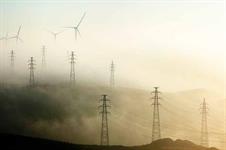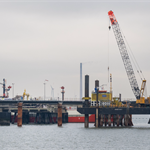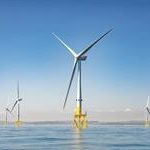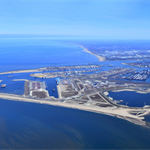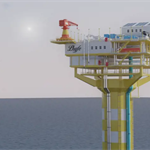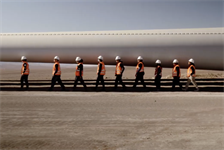Shell targets German offshore wind and green hydrogen
Energy Disrupter
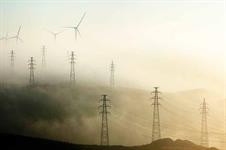
Oil and gas major Shell plans to restructure its German business to invest in offshore wind and green hydrogen as it tests the waters in becoming a net-zero emissions energy company before 2050.
It aims to participate in offshore wind in Germany and possibly use output to produce green hydrogen, the company announced.
The oil and gas giant also outlined ambitions to become a leading supplier of green hydrogen for industrial and transport customers.
It aims to increase the electrolysis capacity at its Rhineland refinery tenfold and to also investigate further hydrogen projects.
Shell has not given capacity targets for either offshore wind capacity or electrolysis capacity.
German offshore wind auctions are due to resume next year, though the government is yet to outline the schedule for future auction rounds.
Deutsche Shell Holding CEO Fabian Ziegler said the company’s transformation in Germany has already started and will accelerate.
“As a key market for the Shell Group, the restructuring of the business in Germany is decisive for Shell’s ambition to become a net zero-emission energy company by 2050 or earlier, in harmony with our customers and society,” Shell board member Huibert Vigeveno, added.
Shell’s German subsidiary also plans to fit its gas stations with fast chargers for electric vehicles.
The announcement came as Shell announced cuts of $2-2.5 billion and job cuts of 7,000-9,000 by the end of 2022 and as CEO Ben van Beurden called for the fossil fuel giant to accelerate low-carbon investments in an interview on the company’s website.
However, van Beurden added that it would seek to increase profits in its upstream business – exploration for oil and gas – to finance its low-carbon push.
“Upstream will be critical to Shell as we change – we need it to be very successful, so we have the financial strength to invest further in our lower-carbon products,” he said.
Shell wants to become a “net-zero emissions energy business” by 2050, or sooner. It aims to reduce the “net carbon footprint of the energy products it sells” by 65% by 2050.
According to figures from Windpower Intelligence, the research and data division of Windpower Monthly, Shell has stakes in 746MW of operational onshore wind capacity, and 108MW of operational offshore capacity.
According to its most recent annual report, Shell planned annual expenditure of €1-2 billion in its New Energies division – set up in 2016 to invest in “lower carbon technology” and to “explore new commercial models focused on the world’s energy transition”. This is a small fraction of the company’s €28 billion total capital expenditure in 2019.
With three months remaining in 2020, Shell has so far invested $2.3 billion in its New Energies division since it was launched – well short of the oil giant’s own guidance of investing $4-6 billion in the unit between 2016 and the end of this year.
Norwegian consultancy Rystad Energy compiled data that showed ten of Europe’s big oil firms – including Shell, BP, Total, Equinor and Eni – spent a combined $5.5 billion on renewable energy projects up to the start of 2020, compared to a total budget of $90 billion in 2019. The consultants forecast Shell to spend the most on renewables between 2026 and 2030 of the ten companies analysed.

